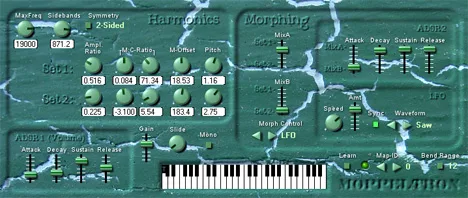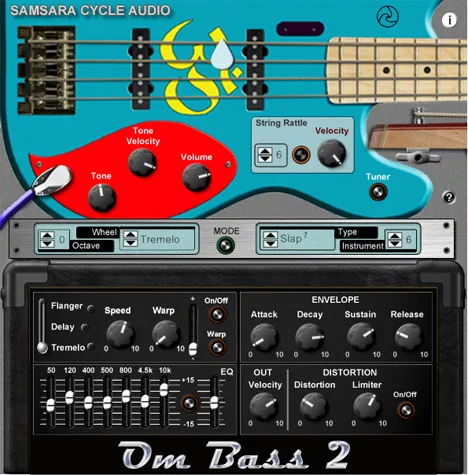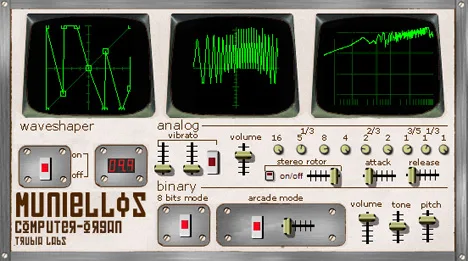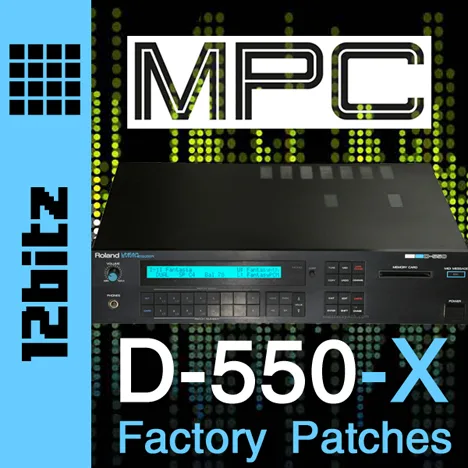The world of sound synthesis is constantly evolving, offering musicians and sound engineers increasingly powerful and flexible tools to realize their creative ideas. Among the multitude of virtual instruments based on traditional methods, there are plugins that explore less common but extremely interesting techniques. One such unique instrument is Moppeltron – a morphing synthesizer from Verklagekasper, which uses the Discrete-Summation Formulae (DSF) synthesis method.
DSF synthesis, proposed by James A. Moorer, is a technique that has certain similarities to frequency modulation (FM synthesis), but at the same time offers significant advantages. The key feature is the ability to precisely define the number of partials (overtones) in the sound, as well as generate one-sided spectra. This opens up new horizons for creating sounds that are difficult or impossible to obtain using other synthesis methods.
Moppeltron harnesses the power of DSF synthesis, combining it with a morphing function. This means you can smoothly transition between two different settings of the DSF parameters, creating dynamic, live, and evolving timbres. This approach makes Moppeltron an incredibly flexible instrument for synthesizing a wide range of sounds and effects – from classic synthesizer timbres to unique, experimental textures.
Key Features of Moppeltron
This plugin offers a set of features that make it powerful and easy to use:
- Two sets of DSF parameters: The ability to define two independent configurations of partials. Precise adjustment of the number of partials, maximum frequency, and other parameters is done through text fields, providing high precision control. Support for one-sided and two-sided spectra.
- Morphing block: Allows you to create static mixes between two sets of DSF parameters, as well as dynamically transform one sound into another, using an ADSR envelope or a low-frequency oscillator (LFO).
- ADSR envelope and volume control: Standard ADSR envelope for controlling the volume of the sound, as well as overall gain control.
- Built-in keyboard: A convenient built-in virtual piano controller for testing sounds.
- MIDI control: Full control over all plugin parameters via MIDI. Easy assignment of MIDI controllers thanks to the MIDI Learn function.
- Polyphony and mono mode: Supports up to 16 voices of polyphony or monophonic mode.
- Note slide and Pitch Bend: The ability to use slide (glide) functions between notes and adjustable Pitch Bend range for expressive playing.
- Preset library: 64 ready-made presets that demonstrate the capabilities of the synthesizer and serve as an excellent starting point for creating your own sounds.
DSF Synthesis Technology
Unlike additive synthesis, where sound is created by adding sinusoidal waves, or subtractive synthesis, where sound is formed by filtering a rich spectrum, DSF synthesis uses a different mathematical approach. This technique generates sound based on the sum of discrete functions, allowing for precise control over the harmonic content. The ability to generate one-sided spectra is particularly interesting, as most natural sounds and sounds created by traditional synthesizers have two-sided spectra. By experimenting with one-sided spectra, you can obtain unusual, sometimes asymmetrical timbres.
Morphing as a Tool for Expression
The morphing function in Moppeltron doesn’t just allow you to mix two sounds. It transforms the plugin into a dynamic instrument. Using an ADSR envelope for morphing allows the sound to evolve over time, creating complex textures and movements. For example, the attack of a sound can have one timbre, and the decay – a completely different one. The LFO, in turn, allows you to add cyclical movement to the parameters, which is ideal for creating pulsating or wave-like timbres.
Moppeltron is an interesting addition to the arsenal of any musician or sound engineer looking for new sounds and experimenting with different synthesis methods. Its unique implementation of DSF synthesis combined with powerful morphing functions, MIDI control, and polyphony makes it an instrument capable of much more than just reproducing static timbres. It encourages exploration and creativity, allowing you to create truly original and expressive sounds.



